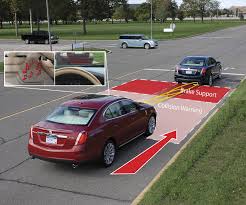 I’ve always imagined a futuristic world where cars could drive themselves, leaving people to read, work or watch movies during their commutes. It turns out we’re getting closer to that day, one step at a time.
I’ve always imagined a futuristic world where cars could drive themselves, leaving people to read, work or watch movies during their commutes. It turns out we’re getting closer to that day, one step at a time.
In the U.S. last year, more than 20 percent of car models offered a front crash prevention system that automatically applies the breaks if there’s a chance of collision. And in Europe, that number is close to 40 percent, and vehicles must have this feature to earn a five-star safety rating.
The system works by using radar, laser or video technology to detect objects in the path of the vehicles, and then compares the speed of the objects with the speed of the car. If it is likely the car will hit the object, the system applies the breaks automatically.
There is a growing body of evidence that these types of systems significantly reduce the incidence of rear-end crashes. A new systematic review published in the journal Accident Analysis and Prevention evaluated the real-world accident data from five European countries and Australia. The analysis included all rear-end crashes, where a car hit the vehicle in front of it or was struck from behind.
After analyzing the data, researchers found that having cars automatically slam on the breaks leads to a 38 percent reduction in rear-end crashes compared to vehicle without the automatic breaking system.
There were also some nuances in the data. For example, cars with the automatic breaking system were more likely to be struck from the vehicle behind them, who would also be forced to slam on the brakes. That’s because the system has better reaction time than a human driver.
Researchers noted the technology would be most effective if widely adopted. Otherwise, in traffic these systems could cause chain reaction accidents when automatic-braking cars stop in time, but human drivers can’t.
But on the whole, the take-home message is clear. Vehicle technology that automatically applies the breaks to avoid crashes is effective at reducing the incidence of car accidents.



Speak Your Mind